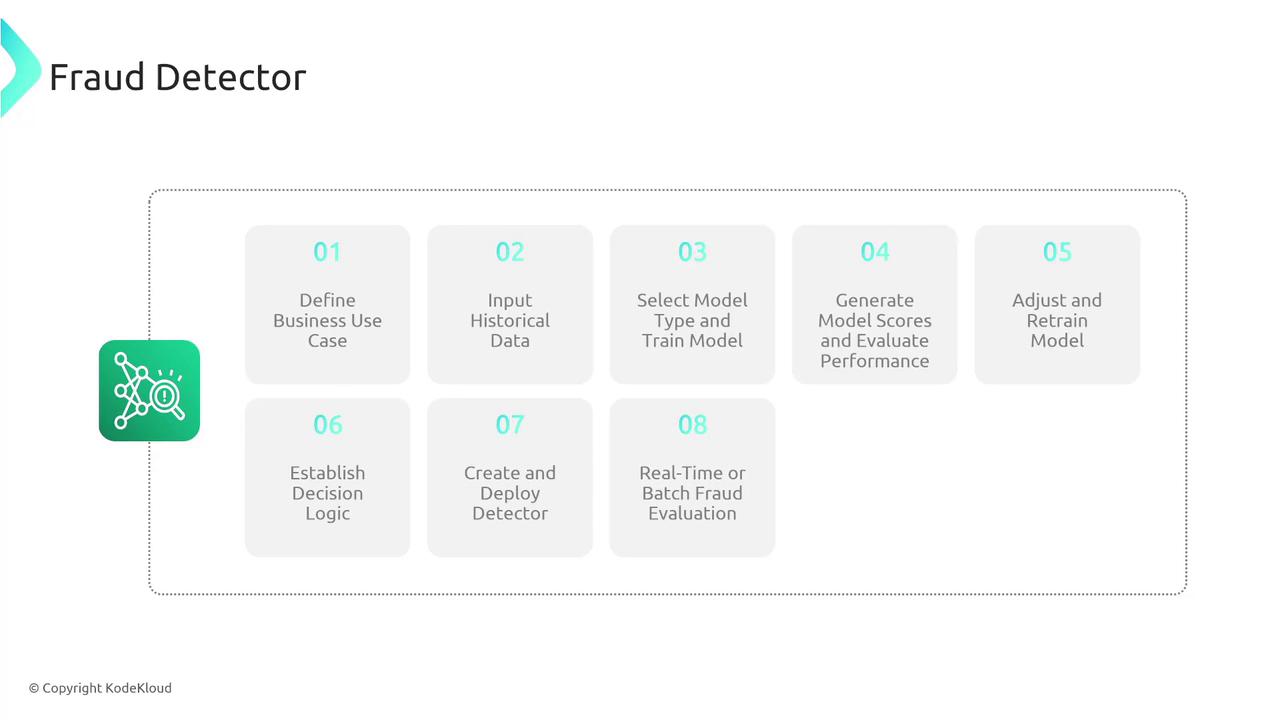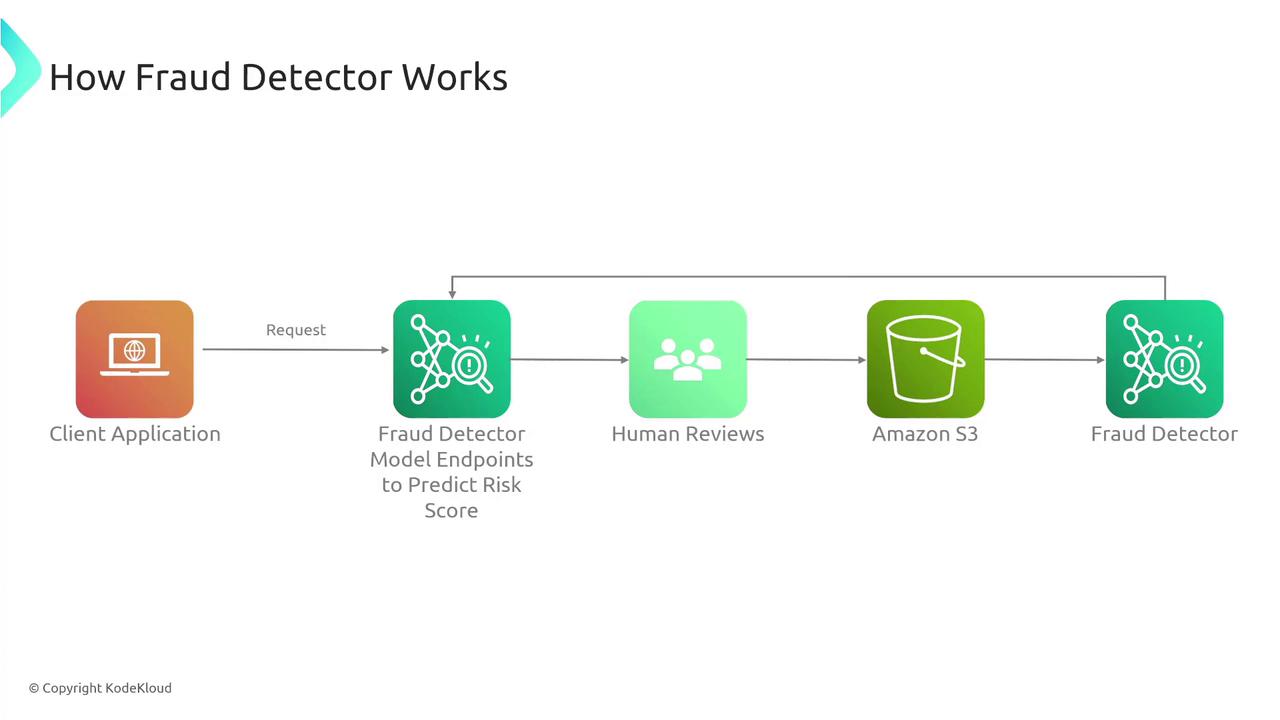AWS Solutions Architect Associate Certification
Services Data and ML
Fraud Detector
Welcome back, Future Solutions Architects. In this article, we explore one of AWS's cutting-edge machine learning services: Fraud Detector. Similar to AWS Forecast, Fraud Detector is a fully managed service that empowers users to build, deploy, and manage fraud detection models—even without prior experience in machine learning.
Fraud Detector significantly reduces online payment fraud by identifying suspicious transactions in real time. Leveraging over 20 years of Amazon's expertise, it analyzes transaction data using advanced machine learning techniques to generate a risk score. This allows users to create customized models that determine whether a transaction should proceed, be flagged for review, or require further scrutiny, all without the need for deep machine learning knowledge.
Managed Service Advantage
Since Fraud Detector is managed by AWS, it takes care of the complex aspects of the process—from identifying relevant data to model creation, training, and deployment. This results in near real-time fraud detection responses, typically within milliseconds.
How Fraud Detector Works
The service offers a range of pre-built detectors and customizable fraud templates, making it ideal for common scenarios such as online payment fraud and fraudulent account registrations. It also allows businesses to merge their own data and rules, tailoring the detection process to unique business needs.
Key aspects include:
- Real-Time Analysis: Processes transactions instantly to generate a confidence score that indicates potential fraud risk.
- Custom Outcomes: Enables setting outcomes like automatic approval, manual review, or flagging for additional investigation.
- Scalability & Security: Designed with built-in scalability, encryption for data in transit and at rest, and robust access management.
Security Reminder
Always integrate Fraud Detector with strict access controls using AWS Identity and Access Management (IAM) to ensure that only authorized users can access sensitive data.
Setting Up Fraud Detector
The process to set up Fraud Detector is streamlined into several clear steps:
- Define the Business Use Case: Identify the specific fraud type you wish to detect.
- Data Provisioning: Provide historical or current transaction data relevant to your case.
- Model Recommendation: Fraud Detector analyzes the input data and suggests the best model type.
- Training the Model: The system trains the model with your data, producing risk confidence scores.
- Performance Evaluation: Assess the model’s effectiveness using the generated confidence scores. Adjust thresholds—for instance, flagging transactions with risk scores above 90% for review—and retrain if necessary.
- Deployment: Deploy the detector for real-time monitoring or batch review, continuously comparing new data with historical trends.

Integrating with Client Applications
Once deployed, client applications can send requests to the Fraud Detector model endpoints. The model evaluates the transaction risk and assigns a score. For high-risk transactions, the system can be configured to:
- Route the transaction for human review.
- Store the output in Amazon S3 for future model training and enhanced accuracy.

Practical Example: Fake or Abusive Reviews
Consider a scenario where Fraud Detector is employed to identify fake or abusive product reviews. When a customer submits a review, the service automatically scans the content for misleading or harmful behavior. This automated screening is crucial for handling the high volume of reviews, thereby preventing overwhelming manual investigation and ensuring operational efficiency.
Conclusion
AWS Fraud Detector is a simplified yet powerful tool for combating fraud. It enables organizations to integrate sophisticated fraud detection capabilities into their applications rapidly, without needing extensive machine learning expertise. This service not only streamlines operations and minimizes false positives but also adapts to the ever-evolving tactics employed by fraudsters.
I'm Michael Forrester. Thank you for reading this article—I look forward to our next discussion.
Watch Video
Watch video content